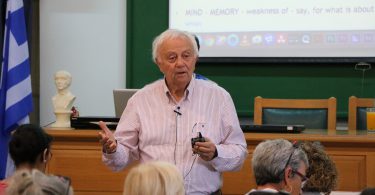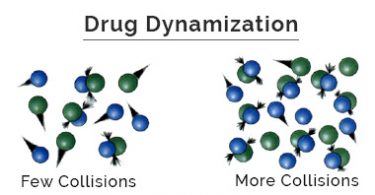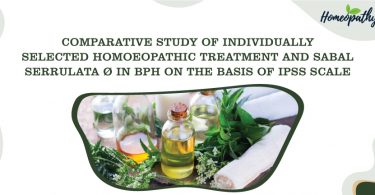
Abstract: This article is an attempt of explaining aetiopathogenesis, clinical features, investigations for hypertension in children’s along with scope of homoeopathy in its management with a special emphasis upon Murphy’s repertory.
Keywords: Hypertension, BP, systolic, diastolic, repertorisation.
Abbreviations: BP- blood pressure
HTN- hypertension
mm of Hg- millimetres of mercury
CNS- central nervous system
ANS- autonomic nervous system
Introduction: In infants and young children, systemic hypertension is uncommon but if it is found present in childhood, it is indicative of serious underlying disease process. Secondary hypertension is common in most of the children. In order to increase early detection of hypertension, accurate blood pressure measurement should be a part of routine annual physical examination of all children above 3 years of age. Blood pressure increases gradually with age and it varies with sex (1).
Average blood pressure in children (2):
| Sr. No. | Age | Systolic BP | Diastolic BP |
| 1 | 1-3 months | 70-80 mm hg | 45-55 mm hg |
| 2 | 4-12 months | 80-90 mm hg | 60-70 mm hg |
| 3 | 1-8 years | 90- 100 mm hg | 60-70 mm hg |
| 4 | 9-14 years | 100-110 mm hg | 60-70 mm hg |
Incidence:
Essential hypertension accounts for 5 – 10 % cases of paediatric hypertension; secondary hypertension is more commonly seen in children (2).
Risk factors for primary hypertension:
- Heredity
- Diet
- Psychological stress
- Obesity (1)
Aetiology of secondary hypertension:
- Hypertension in newborn is associated with renal artery thrombosis.
- Hypertension in early childhood is because of renal diseases, coarctation of aorta, endocrine disorders, medications, etc.
- In adolescence, essential or primary hypertension becomes common.
- CNS and ANS associated causes like increased intra cranial pressure, polio, encephalitis, etc.
- Miscellaneous causes like fracture of long bone, hypercalcemia, white cell transfusion, etc. (1)
Aetiology of persistent hypertension:
- Intrinsic renal diseases: chronic glomerulonephritis, chronic pyelonephritis, obstructive uropathy, congenital lesions, renal tumours, etc.
- Renovascular causes: renal artery stenosis, renal arteritis, renal vein thrombosis.
- Endocrinal causes: pheochromocytoma, cushing’s disease, aldosteronism, neuroblastoma (2).
Aetiology of transient hypertension:
- Renal diseases: acute post streptococcal glomerulonephritis, haemolytic uremic syndrome, post renal transplant, urologic surgery, acute tubular necrosis.
- Miscellaneous causes: administration of steroids, oral contraceptive pills, hypernatraemia, poliomyelitis, porphyria hepatica, coarctation of aorta etc (2).
Pathophysiology:
Renal and renovascular hypertension accounts for majority of children with secondary hypertension. The children may give history of urinary tract infections, obstructive lesions of urinary tract. In renal diseases, hypertension may be related to sodium retention and hypervolaemia, diminution of vasodilator substances. Renovascular hypertension is associated with sodium retention and increased renin secretion which, in turn, activates renin – angiotensin – aldosterone system leading to sodium and water retention, increased peripheral resistance, vasoconstriction, plasma volume expansion and increased cardiac output. Endocrinopathies involving thyroid, parathyroid, and adrenal gland are associated with hypertension. Hyperthyroidism is associated with systolic hypertension and tachycardia. Hypercalcaemia in hyperparathyroidism is associated with hypertension because calcium plays an important role in increasing vascular tone. Congenital adrenal hyperplasia, aldosterone secreting tumours, cushing’s syndrome can also produce hypertension. Pheochromocytoma can lead to hypertension because cardiac and peripheral vascular effect of epinephrine and nor epinephrine, such children usually have persistent hypertension. Poliomyelitis can lead to hypertension because of altered sympathetic tone (1).
Clinical features:
- It has been noted that when subjected to stress or competitive task, the offsprings of hypertensive adults respond with greater increase in heart rate and blood pressure than do children of normotensive parents. Similarly, some children of hypertensive parents respond to sodium loading with weight gain and increase in blood pressure than those without family history of hypertension.
- Children and adolescent with essential hypertension are usually asymptomatic and BP elevation is usually mild. These children may also have mild to moderate obesity.
- Children with secondary hypertension have BP ranging from mild to severe. Unless the pressure is sustained or rising rapidly hypertension doesn’t usually produce symptoms.
- There is growth failure in children with chronic renal failure.
- There is headache, dizziness, epistaxis, anorexia, visual changes and seizures.
- If there is presence of vomiting, temperature elevation, ataxia, stupor, seizures, it indicates hypertensive encephalopathy.
- Cardiac or renal failure can occur in cases of marked hypertension.
- Persistent and sustained hypertension in children can give rise to unexplained seizures and heart failure (1).
- The patient presents with symptoms of underlying disease, for example, polyuria, polydipsia, weakness, fatigue, pallor, weight loss, oedema in chronic renal disease.
- In coarctation of aorta, femoral pulse is weak; BP in lower limbs is less than in upper limb.
- In pheochromocytoma, there are episodes of palpitation, sweating, flushing, weight loss.
- Patient with cushing syndrome have plethoric face, buffalo hump type of obesity, hirsutism and abdominal striae.
- In severe hypertension, patients present with visual disturbance, convulsions, nerve palsy and neurologic deficit (2).
Differential diagnosis:
- Asymmetrical pressures with right and left arm indicate coarctation of aorta, obstructive aortoarteritis.
- High BP in arms compared to legs occurs in coarctation of aorta and obstructive aortitis.
- Renal artery stenosis and obstructive aortoarteritis result in abdominal bruits.
- Hypertension, pallor and oedema indicates chronic renal failure.
- Weight loss, headache, palpitation, flushing, sweating, postural hypotension indicate pheochromocytoma.
- Obesity, hirsutism, abdominal striae and buffalo hump indicate cushing’s syndrome
- Abdominal mass, history of haematuria suggest renal tumour, obstructive uropathy, polycystic kidney, etc. (2)
Diagnosis in essential hypertension:
- Age of patient (adolescent), level of BP elevation (usually mild), weight of patient (mild to moderate obesity), positive family history and paucity of signs and symptoms of underlying disease (1).
Diagnosis in secondary hypertension:
- Patient are rarely obese except in cases of diseases of adrenal cortex.
- Level of BP elevation (mild to severe), age of patient (usually young), presence of symptoms of underlying disease, family history of renal disease, hypertension, premature cardiovascular disease (1).
- Urine analysis should be done in all cases. Clean voided midstream urine collected with aseptic precautions should be cultured for bacterial isolation in case of suspected urinary tract infection.
- Renal function test to rule out renal failure.
- Intravenous pyelogram helps to assess size and shape of kidneys, anomaly of calyx, pelvis and ureter.
- Plasma renin activity, urinary catecholamine’s to rule out pheochromocytoma.
- Renal biopsy, renal ultrasonography, chest X ray, contrast aortography, renal scintiscan, etc. (2)
Prognosis:
The prognosis of case depends upon:
Prevention:
Repertorisation:
- :
Chapter: blood and diseases
Rubric: hypertension
CRAT, LACH, NAT-M, VERAT, adren, aur, bar-c, calc, glon, grat, nux-v, plum, raulw, sec, stront-c, sulph, sumb (3).
Conclusion:
Hypertension in paediatric age group is a very uncommon and is often incidental finding. It’s presence signifies serious underlying pathology. The consequences of hypertension depend upon the age of onset of the disease. The earlier the onset, the severe will be the consequences. Whether the hypertension is essential or secondary, it will contribute to risk of developing serious cardiovascular or cerebrovascular diseases in adulthood.
Homoeopathy has a limited scope in treatment of paediatric hypertension because of various factors such as gross pathological changes may be present in patients of renal failure, pheochromocytoma, renal artery stenosis, etc. and there is very limited literature is available in homoeopathy for this condition. After comparing some modern repertories like Complete repertory, Murphy’s repertory, Synthesis repertory for finding the simillimum; I came to know that only limited data available for this and that to in Murphy’s repertory. So, the budding homoeopaths can do the clinical research or the literature research for the same. Both the things will contribute a lot to the field (3).[Y1]
References:
- Behrman R. E., Kliegman R. M., jenson H. B., Nelson textbook of paediatrics, 17th edition, Elsevier publisher, 2004, pg. no. 1592 – 1598
2) Ghai O. P., Gupta P., Paul V. K., Essential paediatrics, 6th edition revised and enlarged, CBS publishers and distributors, New Delhi, 2004, pg. no. 432 – 436
- Murphy R., Homoeopathic medical repertory, 2nd revised edition, B. Jain publications, New Delhi, 1998, pg. no. 193 and 418
About the author:
Dr Pathak Amol Pramodrao
BHMS, MD (Practice of Medicine) MA (Psy.) Ph. D. Scholar
Assistant Professor- Practice of Medicine
Jawaharlal Nehru Homoeopathic Medical College
Parul University
Co Author: Dr. Pathak Vibhuti Amol
BHMS MD (Organon of Medicine) MA (Psy.) Ph. D. Scholar
Assistant Professor- Organon of Medicine
Parul institute of homoeopathy & research
Parul University
[Y1]Cite and superscript the reference in Vancouver style





